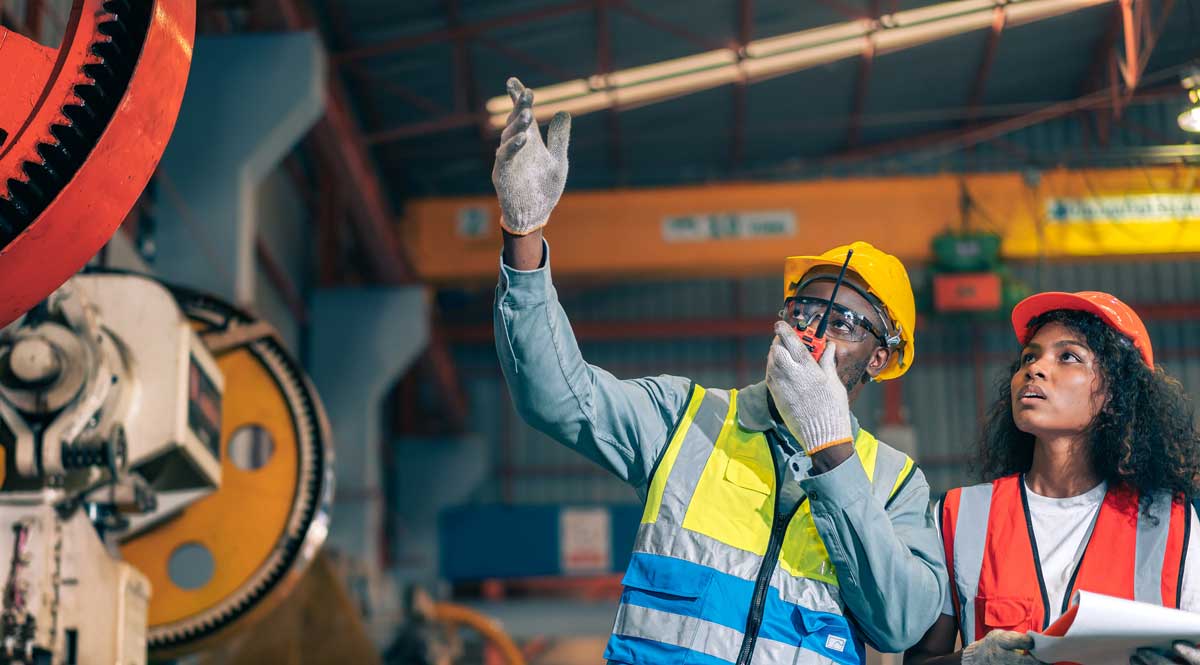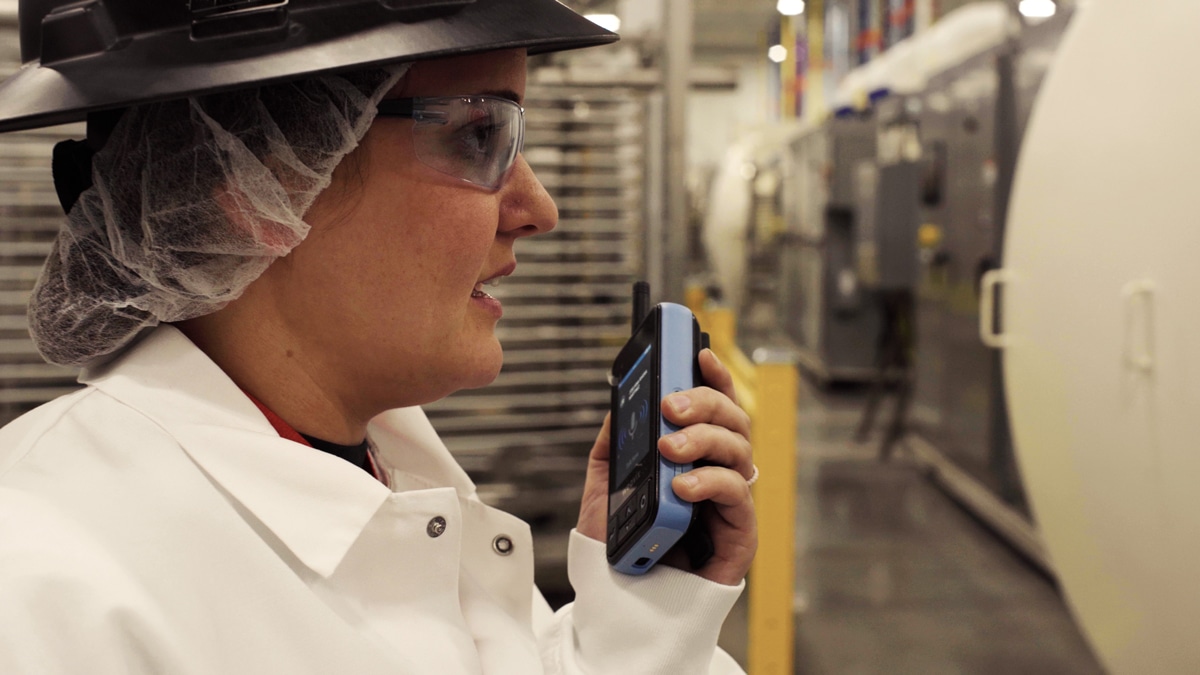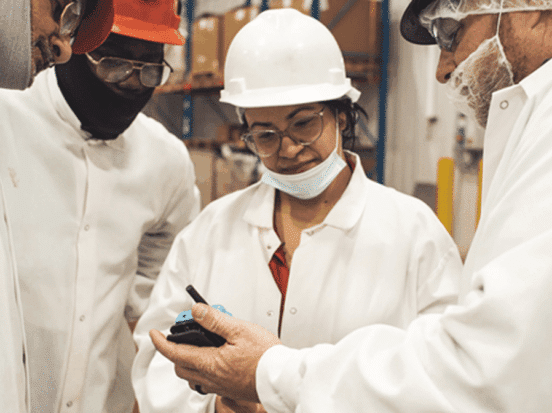It was a busy day shift at the vast industrial facility, with production lines running at full capacity. So, when drops of water started pooling on the plant floor, several workers noticed but assumed it was a minor spill that someone else would address. That is, until the puddle grew to two feet wide, drawing the attention of a nearby team. Looking up, they quickly saw the source: sagging insulated roofing and ceiling material that was failing fast, high above critical equipment.
Key Highlights:
- Communication breakdowns are costly: A simple leak incident revealed how language barriers and lack of real-time communication tools can turn minor technical issues into major operational and financial losses.
- Smart radios end silos: Traditional two-way radios restricted to supervisors create dangerous communication gaps; modern smart radios empower every worker to connect instantly across shifts, roles, and languages.
- Efficiency and safety gains: Universal communication tools cut response times from minutes to seconds, reduce downtime, and enable instant photo or video reporting for faster, safer decision-making.
- Cultural transformation through connectivity: Equipping all workers with AI-powered, multilingual communication devices breaks down barriers, strengthens inclusion, and gives every employee a voice in safety and operations.
One of the workers immediately recognized how big a problem this could become. Sadly, neither he nor his frontline colleagues had a simple way to communicate the emergency. Some spoke Spanish, others spoke Korean. Without radios or a wall microphone nearby, one worker took the initiative, rushing to the other side of the 90,000-square-foot facility, shouting the name of his bilingual shift supervisor through the roar of loud machinery and down the halls of the many offices.
By the time he found the supervisor and they returned, the leak had intensified – a quarter inch of standing water expanding toward critical electrical equipment. The supervisor immediately saw it was significant enough to force an unplanned production shutdown. A disjointed translation chain ensued as managers and technicians were called in to help, exposing a significant gap in facility operations. In scenarios and times like this, such delayed responses can ultimately cost a facility thousands in repairs and far more in downtime than could be required to make them.
What can turn these technical challenges into financial disasters is rarely discussed in boardrooms—communication breakdowns between teams. It’s companies that can solve this communication gap that end up gaining the competitive advantage that shows up on their P&L statements.

The Evolution of Facility Communications
Facilities have operated under an outdated communication model for decades, limiting radio distribution to only management and select team members. Traditional two-way radios or “walkie-talkies” have been viewed as capital expenditures that can be expensive in the larger quantities needed.
This short-sighted approach typically results from cost constraints. The consequences often lead to dangerous silos between departments, shifts, languages, and organizational levels. Critical information gets trapped, slowing decision-making while operational efficiency drains. This fragmented approach creates blind spots that impact safety, productivity, and, ultimately, the bottom line.
Fortunately, the industry is now witnessing a fundamental shift in communications strategy, ensuring purpose-built “smart radios” are available to all workers, regardless of role or language. These advanced systems connect voices, provide valuable operational data, enable real-time translations, and allow workers to capture video or photos to create digital audit trails that offer unprecedented visibility into facility operations.
Deployment is surprisingly simple. Workers tap their badge to sign-in and grab any device off a rapid charging station that hosts the radios. This eliminates the headaches managers expect when dealing with a tech rollout.
Improved Communication’s Impact on Operational Efficiency
When every employee has direct communication capability, it removes the subjective nature of frontline work. Why does this matter? Response times to critical situations drop from thirty minutes to mere seconds. A maintenance technician discovering a leak or equipment malfunction can instantly alert the right personnel while sharing live images of the issue, eliminating diagnostic guesswork and accelerating resolution. With a smart radio system deployment, everyone has the same easy-to-use experience, regardless of function, from maintenance technicians to operations managers to safety personnel.
Eliminating “search time” – when workers physically need to take time to find colleagues or supervisors – represents one of the most significant efficiency gains. A 2022 Harris Poll Survey of over 1,000 employees in the United States found that, on average, employees spend at least two hours a day looking for the documents, information, or people they need to do their jobs. That’s 25 percent of a typical work week. In manufacturing facilities, universal communication tools drastically reduce this wasted time, keeping skilled personnel focused on value-adding activities.
Communications is Safety
Transformation begins when every worker becomes an active communicator in a facility. Universal safety communication tools enable immediate hazard reporting from anyone, anywhere – with the crucial ability to include digital photographic or video evidence that eliminates ambiguity. When a safety issue arises, there’s no delay in documentation or notification.
When everyone has access to smart radios, the system proves invaluable during emergencies. Mass alerts reach everyone simultaneously, regardless of location or language, ensuring coordinated responses that follow established protocols.

Reshaping Company Culture through Universal Communication Technology
When all employees receive smart radios equipped with easy-to-use AI translation capabilities that help eliminate language barriers and permission-based channel creation, a workforce finally works together. Regardless of a worker’s preferred language, every voice carries equal weight and importance.
With smart radio deployments, companies have the opportunity to improve workplace dynamics. Frontline workers gain direct access to leadership, while managers receive unfiltered insights from the floor. Workers previously isolated by language or role limitations become fully integrated team members, driving measurable improvements.
Investing in modern communication technology delivers measurable ROI through reduced response time, downtime, and safety incidents. Beyond financial metrics, these tools fundamentally alter facility operations by unifying multilingual workforces and breaking down traditional barriers. This simpler, smarter approach to universal communication ensures a well-orchestrated experience across the entire company.
Summary: The Critical Role of Communication Technology in Manufacturing Operations
*Analysis based on weavix research findings*
Manufacturing facilities face significant operational and financial risks when communication breakdowns occur, as demonstrated by incidents where minor issues escalate into major problems due to inadequate communication systems. The implementation of universal communication tools has emerged as a transformative solution, enabling every worker regardless of role or language to participate in critical facility operations. These universal communication tools eliminate the traditional model where only management had access to communication devices, creating a more inclusive and efficient workplace environment.
Real-time communication tools have proven essential for reducing response times from thirty minutes to mere seconds during critical situations. When equipped with real-time communication tools, maintenance technicians can instantly alert appropriate personnel while sharing live images of issues, eliminating diagnostic delays and accelerating problem resolution. The elimination of “search time” – when workers must physically locate colleagues or supervisors – represents one of the most significant efficiency gains, as employees typically spend 25 percent of their work week looking for information or people they need.
Emergency communication systems play a vital role in workplace safety, enabling immediate hazard reporting with digital photographic or video evidence that eliminates ambiguity. During critical situations, emergency communication systems ensure mass alerts reach everyone simultaneously regardless of location or language, facilitating coordinated responses that follow established safety protocols.
The focus on improving workplace communication through smart radio deployment fundamentally reshapes company culture by providing AI translation capabilities and breaking down language barriers. Improving workplace communication creates measurable ROI through reduced response times, decreased downtime, and fewer safety incidents, while also unifying multilingual workforces and eliminating traditional operational silos that have historically plagued manufacturing environments.
This article first appeared in Industry Equipment News (IEN).
 Kevin Turpin
Kevin Turpin 
